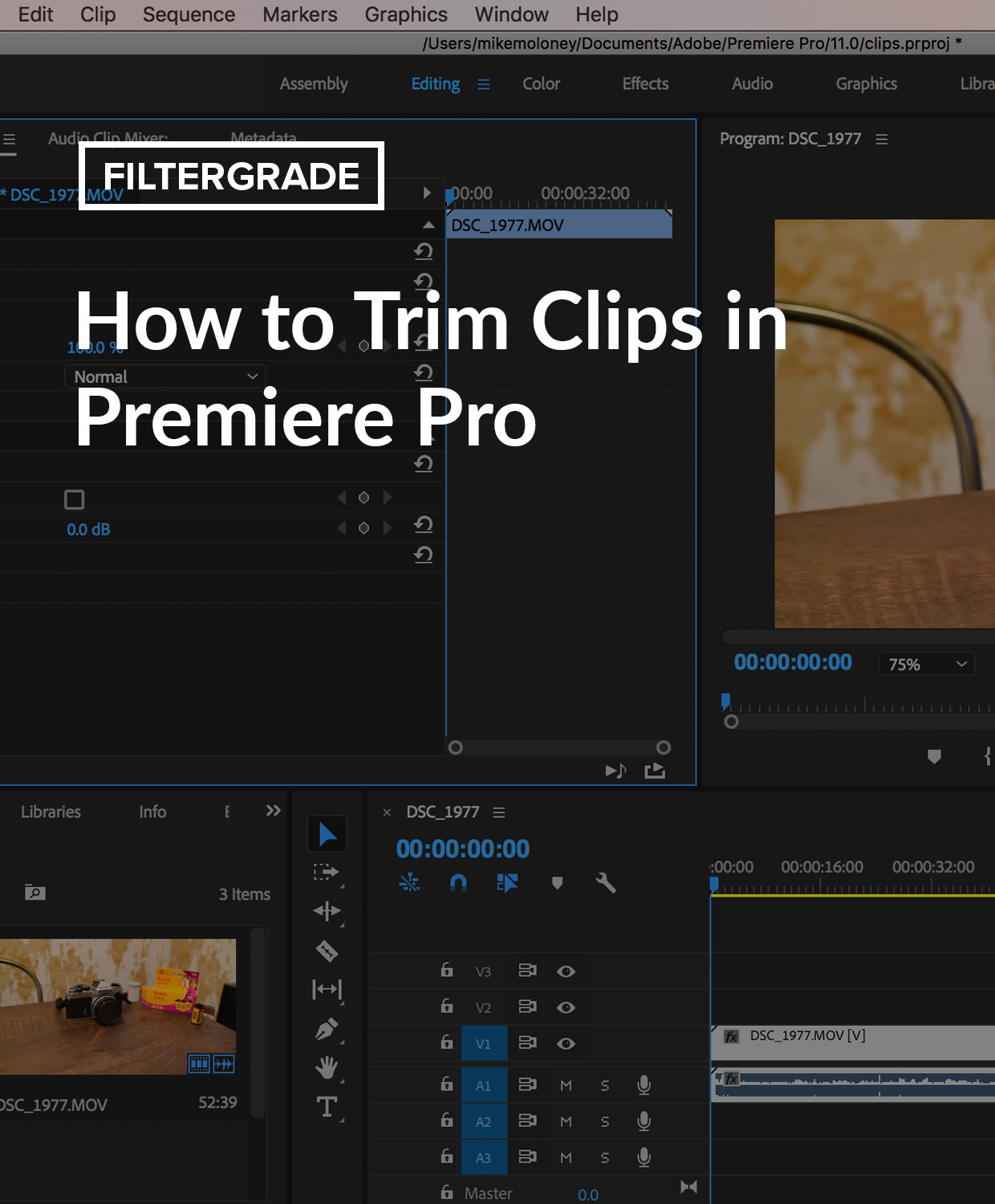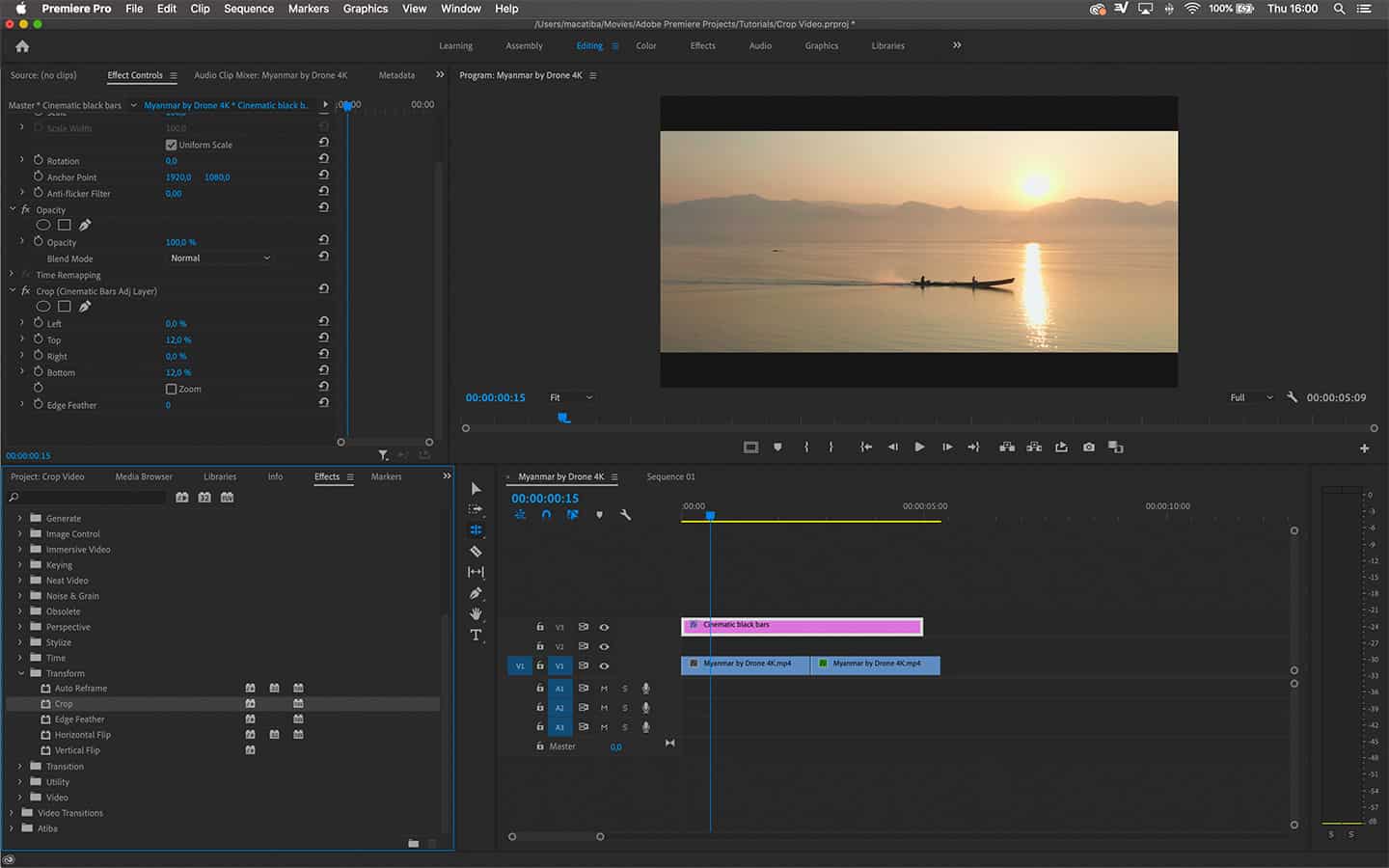

- ADOBE PREMIERE PRO CROP VIDEO HOW TO
- ADOBE PREMIERE PRO CROP VIDEO 1080P
- ADOBE PREMIERE PRO CROP VIDEO UPDATE
ADOBE PREMIERE PRO CROP VIDEO HOW TO
How to Find Height or Vertical Value Based on Aspect Ratio? You must know what aspect ratio is needed for your final delivery. The next thing you should know is the aspect ratio.
ADOBE PREMIERE PRO CROP VIDEO UPDATE
You can update the resolution in the middle of your editing through the above steps.Ĭhanging resolution of your timeline is easy. (To get the sequence settings, right-click on existing sequence and click “Sequence Settings” or go to “File” -> “New” -> “Sequence”, for a new one). In order to make a 1920 x 1080 video in Premiere, you need to set the “Horizontal” and “Vertical” values to “1920” and “1080” respectively, against “Frame Size” in the “Sequence Settings” window.
ADOBE PREMIERE PRO CROP VIDEO 1080P
Against “ Frame Size“, change the “horizontal” and “vertical” resolution to, say, 19 for a 1080p HD project.“Sequence Settings” window will be displayed.Right-click on the sequence that needs to be updated and select “Sequence Settings”.In the “ Editing” workspace, go to the “ Project Panel“.I was impressed with how this worked, especially because all the changes were non-destructive and could be over-ridden using Motion settings. For those of us who need to repurpose projects for multiple platforms, this new feature could save all of us a lot of time.How to Change Resolution in Premiere Pro For Already Existing Sequence? Again, both title and action have changed position.Īnd here’s the 9:16 version. Notice how the text changed in size and the snowboarder moved to the center again. Note the shifted position for the title and that the snowboarder is now centered.

Here’s the 1:1 version (with the playhead on the same frame). This was the source 4:3 image, with a title added on a higher track. If you need to animate them, use keyframes.

NOTE: As with clips, you can over-ride any Reframe settings by applying custom Motion settings. Then, it creates a new sequence reflecting the new aspect ratio. Premiere analyzes the sequence to determine what changes it needs to make. This retains transitions, but replaces any existing Motion settings. This creates a nested sequence preserving your settings, but removes any transitions.
If you applied custom Motion settings, click Nest Clips. Select the Aspect Ratio you need to match. Choose Sequence > Auto-Reframe Sequence. Control-click a sequence in the Project panel. Unlike clips, when Premiere auto-reframes a sequence, it creates a new sequence, leaving the original sequence untouched. NOTE: None of the changes to a clip are permanent. If you don’t like the results that Premiere came up with, you can over-ride them using keyframes in Effect Controls > Motion. Basically, it “pans-and-scans” the clip so that the action stays in the frame, even though the snowboarder was moving across the frame from right to left. This allows Premiere to determine what it wants to feature in the reframed shot. NOTE: For some reason, sometimes this option does not appear when a clip is selected in the Timeline. Select the clip you want to reframe and go to Effect Controls > Auto Reframe (it’s at the bottom of the window). Because there is a lot of action with the snowboarder sliding down the mountain, I changed the Motion preset to Faster Motion. For example, here’s a 4:3 clip that I edited into a 9:16 project. We can auto-reframe individual clips or completed sequences.įootage courtesy: Standard Films ( To reframe a clip, FIRST, move it into a sequence that uses a different aspect ratio than the clip itself. However, converting a vertical video to horizontal 16:9 will result in very low image quality due to a lack of pixels in the source image. Taking something big and making it smaller will look fine. NOTE: This process is, essentially, cropping an image. Plus, as you’ll see, it also automatically repositions graphics. Even better, by harnessing the power of AI, which Adobe calls Adobe Sensei, Premiere attempts to keep key action in the frame, even after resizing. The benefit of the latest update, though, is that this conversion process happens quickly and automatically. In the past, we could do this manually through cropping, then manually applying Motion keyframes to change the position of the video in the frame. A typical reason to do this is to convert a 16:9 video into a 1:1 snippet to post to Instagram, or convert a horizontal video into vertical to post to a website. What Auto-Reframe does is convert existing clips or sequences into different aspect ratios – automatically. Adobe introduced Auto-Reframe in the latest update to Premiere Pro CC 2020.







 0 kommentar(er)
0 kommentar(er)
